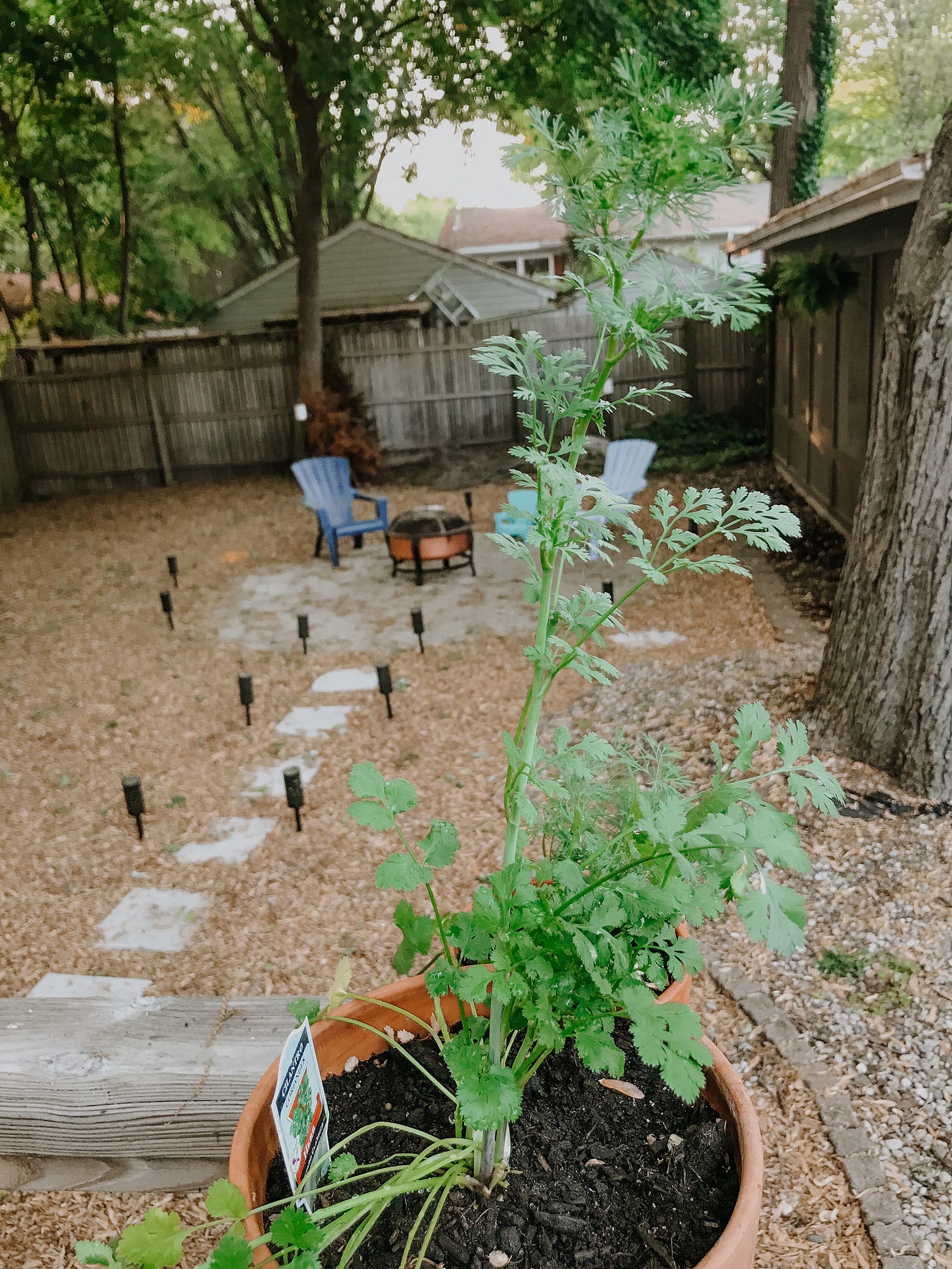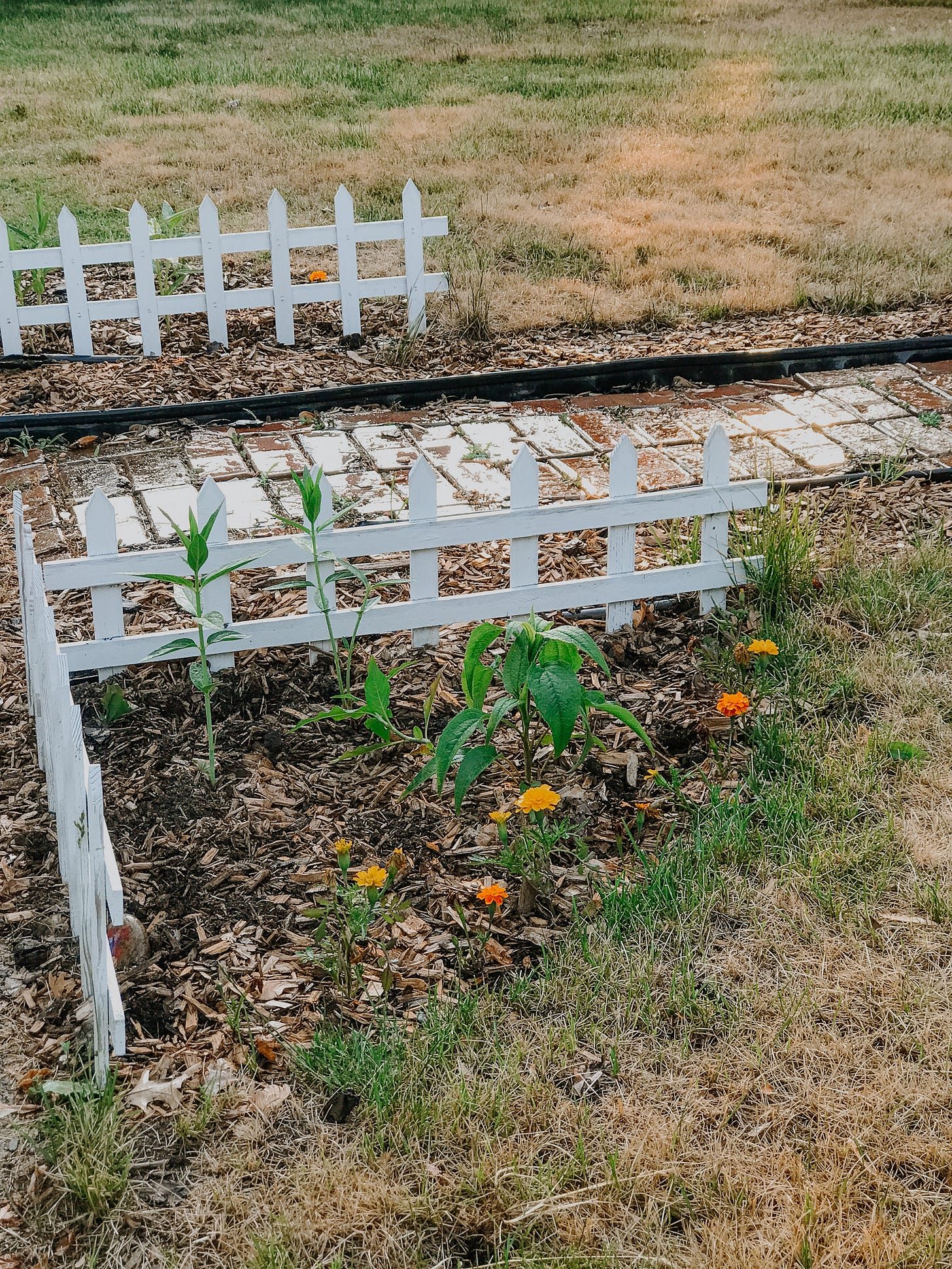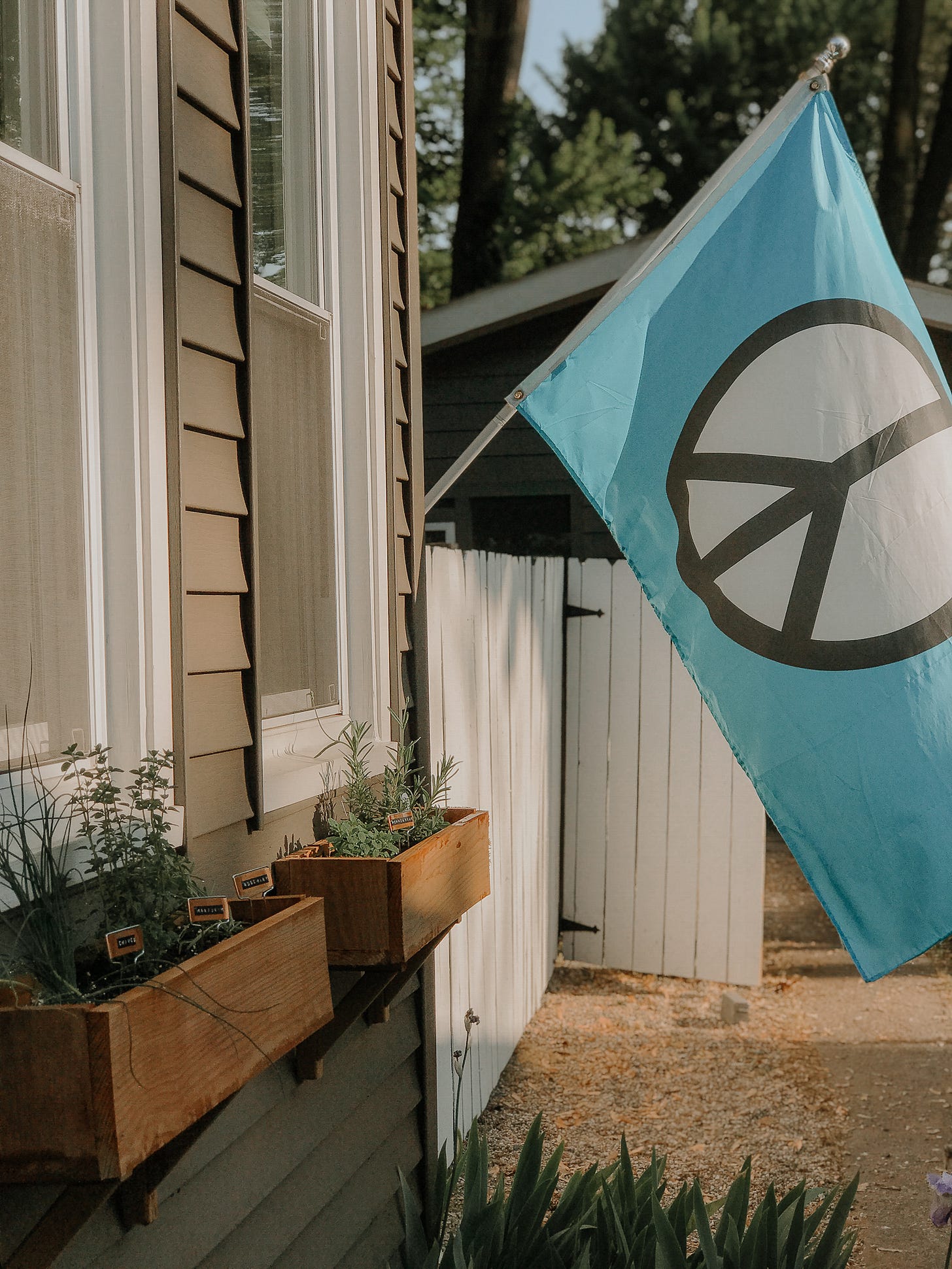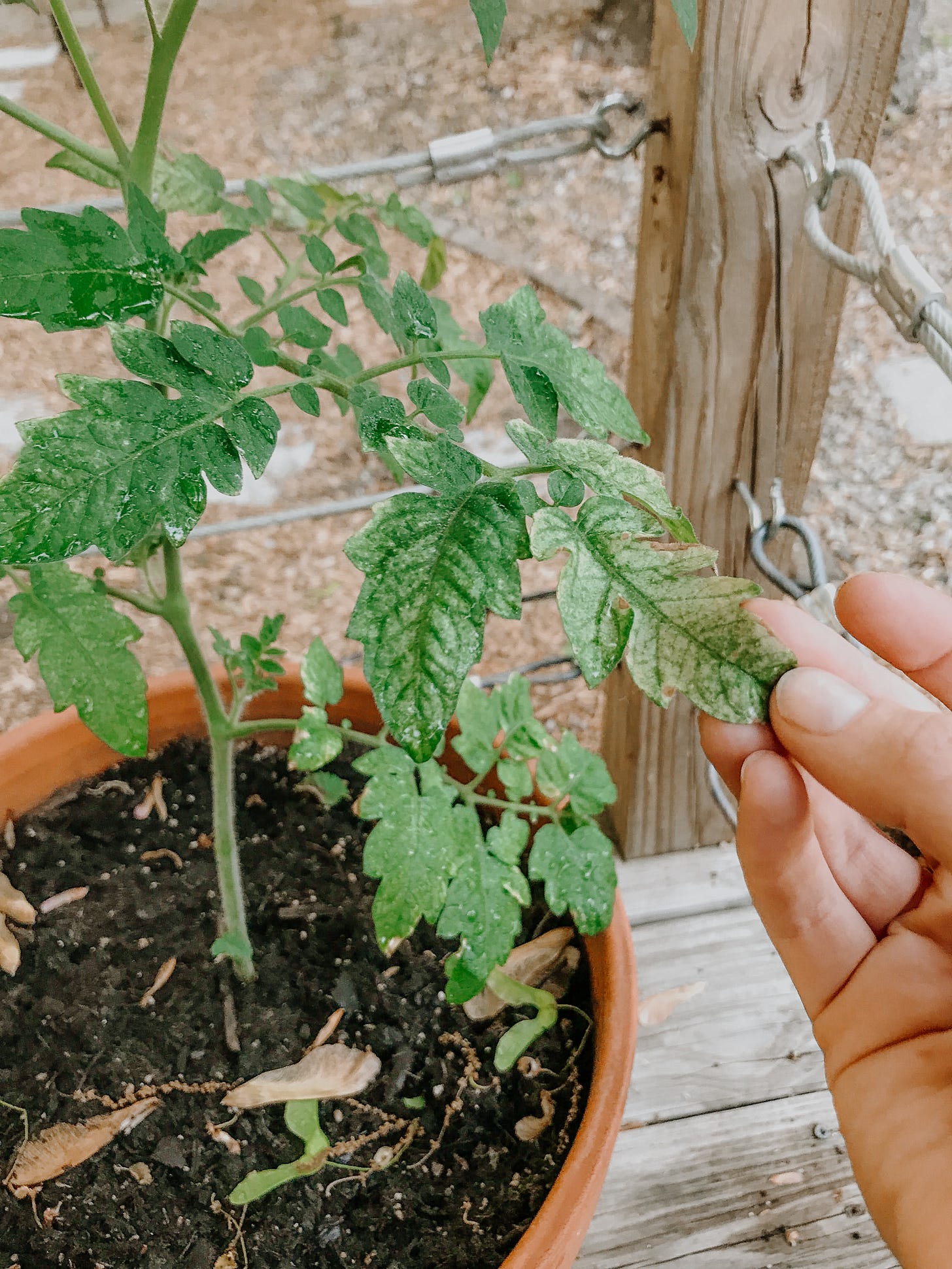Welcome to 🍅 GARDEN NOTES 🥬
A gardener lite logbook of weekly learnings & findings as I tend to my garden this season. Receiving guidance primarily from my elders; my neighbor, mother-in-law, grandparents, and greenhouse friend. Secondary resources are the Old Farmer’s Almanac and Google.
Logbook:
Week 2: Planting (you’re here.)
WEEK 2 | MAY 28 – JUNE 4, 2023
It’s the second week with my garden. The plants are all officially in their soil for the season — be it box, bed, or pot! Didn’t get my peony seeds in so I painted them instead. I’ll plant the bulbs in the fall.
I’ve been diligently watering all my younglings twice per day amidst this late spring heat wave. You’ll see with my tomato plants that what seems the simplest of tasks like watering, there are still subtleties to learn. Different plants interact differently with how they best receive water in relationship to the heat, sun, or shade…who knew!
Tomatoes
I’m growing 9 tomato plants this year, 3 varieties:
Tommy-toe (1 plant)
Beefsteak (4 plants)
Cherry tomatoes (4 plants)

I planted the tommy-toe on Memorial weekend. It was hit with a late spring heat wave its first week in the soil. The leaves speckled white a few days in. Was I overwatering them? A few days later, my neighbor advised me not to wet the leaves or they’ll get sunburned.
Mystery solved: I was watering the leaves of my tomato plant so when the sun hit them each morning her poor little tendrils were fried in the hot sun. Sorry ole gal! Megan Gilger’s *hot tip* for sunburned tomato leaves was helpful also.
My greenhouse friend advised me to plant my Tommy-toe very far down in the pot, almost to the bottom. When the fruit starts growing, it makes the plant really top-heavy so you want it to have a strong base.
Lesson 1: Water tomatoes at their root, don’t get the leaves wet.
Lesson 2: Plant tomato plants really far down in the soil to combat it getting top-heavy.
Cilantro/Coriander Herb
I love fresh cilantro as a garnish for guacamole, burritos, and nachos so it was a must for my herb garden this year.

A thick stalk shot up the center of the plant 1 week after I planted it in the late spring heat wave. This was the cilantro plant bolting due to the high heat. Once cilantro bolts it’s near its end as the leaves turn bitter*. The coriander seeds from the plant need to be harvested & replanted during the next cool season. Last week’s high heat made my cilantro plant bolt within a week of planting!
+ I plan to use the rest of the leaves for a few upcoming meals like guacamole & cilantro-lime rice. I’ll harvest them in thirds so as not to take too much at one picking. Once the center stalk flowers, I’ll harvest the seeds and plant them in a corner of my raised bed or in a cooler shaded spot on the back deck.
Lesson 1: Plant cilantro in cooler seasons like spring/fall (this year’s May heat wave threw this off). It can handle a light frost for pre-Memorial Wkd planting.
Fun fact: cilantro and coriander come from the same plant; “cilantro” is the leaves and “coriander” is the seeds.
*Resource: Old Farmer’s Almanac: Cilantro (Coriander) Plant
Butterfly garden
Last Fall, I cut out two corners near our front walkway for a pollinator garden with native plants. A few milkweed varieties and coneflowers from my greenhouse friend were planted late Fall in hopes they’d rise this Spring. Then the damn squirrels had their way and I figured I’d all but lost them but alas they came back this year! Mostly.

I planted marigolds around the border in hopes they’d be a natural deterrent to rabbits and squirrels but I still woke to holes in the mulch each morning. Then I sprinkled cayenne after the night watering which did the trick. Point 1 for me.
+ I have a milkweed plant & a dill plant to add to replace the lost few.
After planting the last of my tomato plants, a lime-green caterpillar crawled up my leg. This was a caterpillar that would soon be a butterfly. I brought it to the milkweed to begin its feast, proud to assist in the journey. Wow, this is why I do this! I glee. Later that daymy neighbor tells me, “Sounds like you had a hornworm that will eat all your tomato leaves.” Point 0 for me.
Lesson 1: Sprinkle cayenne at the base of your plants after watering to keep squirrels away.
Lesson 2: Hornworms are lime-green caterpillars that will destroy your tomato plants. Good news: they’re not a fan of milkweed!
An unexpected surprise: After watching my frustration with the squirrels this week, River has started to walk outside whenever she sees a squirrel in the yard & yells in her cute little sing-songy voice: “Squirrels, go ah-way!” And they do. So maybe a verbal toddler in the garden is another helpful squirrel deterrent.
Em: 2
Squirrels: 1
My personal essays on motherhood, art, and healing — right this way!







